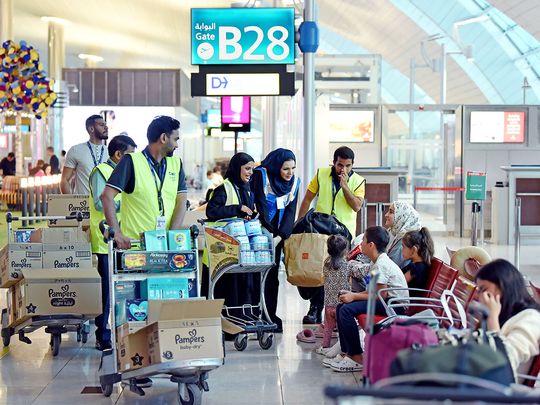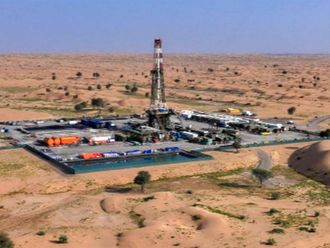
Dubai: The Dubai Airports will maintain the same emergency response protocols that it fine-tuned during last week’s unprecedented rains, which severely impacted upon airport operations and flight schedules.
Having overcome the worst of it, Dubai Airports (DXB) is ‘well-prepared’ to take on any such future crisis, according to its CEO, Paul Griffiths. And that its teams implemented plans with the ‘right people, structures, and coordination’ to ensure full-scale recovery of operations in record time.
“We adhered to our protocols and actively managed the incident,” said the CEO. “I don't think we're going to make any changes as a result of that.
“But I think changes are needed with some of the other stakeholders who didn't respond as well as they should have during the crisis. That's obviously up for them to come up with.
“We would probably advise our airline customers to be a bit more timely with better advice to customers. Otherwise, I think it went as planned. It was an unprecedented weather event that there really isn't a lot more we could have done."
Full flight schedules have resumed at DXB resumed from last Tuesday.
No damage to taxiways, runways
Griffiths also dispelled rumors suggesting significant flooding on taxiways and runways, stating that such issues did not impede airlines' ability to park aircraft during the floods. (Taxiways are routes an aircraft can taxi when moving to or from a runway.)
Despite the week-long disruption that resulted in around 2,100 flight cancellations and diversions, Griffiths said the airport incurred only minor damages to its infrastructure, which were primarily minor electrical issues that were promptly addressed.
The airport itself experienced minimal flooding. Griffiths attributed this to engineering work undertaken from recent years to triple the capacities of the drainage systems.
“We've had some electrical issues and minor impact to the fabric and infrastructure of the airport, but nothing too major,” said Griffiths. “The actual drainage system worked exactly as designed. We had all the pumps going, and we were taking huge amounts of water away from the airfields, and as a result of that, our runways and taxiways were pretty clear.”
The decision to undertake the engineering works was ‘exactly the right decision’, as airport authorities were able to clear the airfield of all the excess water in a fairly short span of time.
“We then tried to get the message out to people to check with their airlines to see when the flights are actually departing,” said Griffiths. “I think some of the airlines had trouble giving accurate information, or they were overwhelmed their systems and websites and contact centres couldn't cope with the volume.”
The CEO explained that despite efforts to communicate via DXB’s website, many passengers still arrived at the airport hoping to travel.
“We still faced challenges with transit passengers who were already airside.”
Main challenges
After the heaviest downpours on April 16, Dubai Airports was forced to halt operations for 25 minutes. “But we were pretty much back to full operating capacity by the next day,” said Griffiths.
During the crisis, resources were bolstered at the operations of the Air Operations Control Center, a 24/7 facility with all the stakeholders represented. “That runs the airport, normally 24/7,” the CEO said. “All we had to do was put a bit more resource into that to make it a little more capable of supporting the operation.”

Although the airport infrastructure recovered quickly, accessing crews and passengers due to severe flooding remained a challenge at the airport. He explained that it created a logjam, making it challenging to manage flights.
“We responded by arranging accommodations, ensuring food and drink availability, and mobilizing additional supplies for the airport. However, the initial problem revolved around accessing aircraft, crews, and essential services amidst the flooding.” The airport supplied 75,000 welfare packages to affected passengers.
Future plans
As for plans to safeguard the airport against future weather events, Griffiths said that Dubai Airports would continue investing in technology, customer facilitation, and communication systems as part of DXB’s regular operations.
While there may be some minor infrastructure enhancements to existing structures, Griffiths does not anticipate any major transformations, given that the airport’s current infrastructure performed well during the event. “The main challenge was managing the logistics of a large number of passengers who were at the airport for an extended period,” he added.
Implications on passenger numbers
The CEO of the world’s busiest hub is also confident the week-long disruptions will not impact DXB’s passenger numbers in the long term. “We have 250,000 passengers regularly going through the airport every single day. And over the year, I don't think this will have a significant impact because we're back to normal operations.
“People are still arriving and departing as they would normally say a few days of disruption will disrupt the numbers in the short term. In the longer term, I don't think we'll have a particular problem.”










